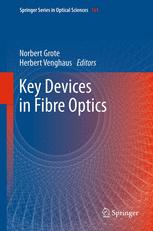

Most ebook files are in PDF format, so you can easily read them using various software such as Foxit Reader or directly on the Google Chrome browser.
Some ebook files are released by publishers in other formats such as .awz, .mobi, .epub, .fb2, etc. You may need to install specific software to read these formats on mobile/PC, such as Calibre.
Please read the tutorial at this link: https://ebookbell.com/faq
We offer FREE conversion to the popular formats you request; however, this may take some time. Therefore, right after payment, please email us, and we will try to provide the service as quickly as possible.
For some exceptional file formats or broken links (if any), please refrain from opening any disputes. Instead, email us first, and we will try to assist within a maximum of 6 hours.
EbookBell Team

4.8
64 reviewsThe book gives an in-depth description of the key devices of current and next generation fibre optic communication networks. In particular, the book covers devices such as semiconductor lasers, optical amplifiers, modulators, wavelength filters, and detectors but the relevant properties of optical fibres as well. The presentations include the physical principles underlying the various devices, the technologies used for the realization of the different devices, typical performance characteristics and limitations, and development trends towards more advanced components are also illustrated. Thus the scope of the book spans relevant principles, state-of-the-art implementations, the status of current research and expected future components.